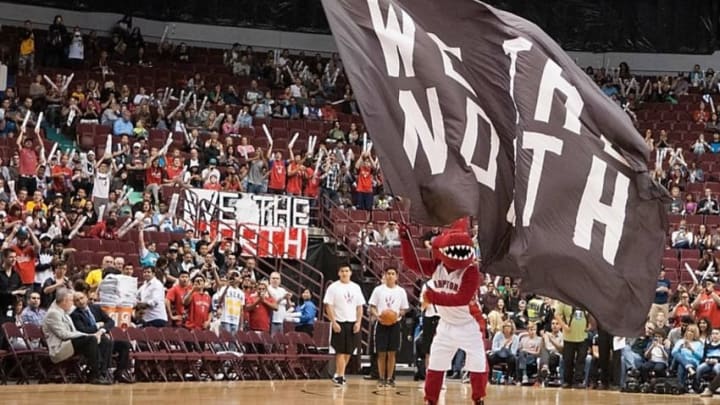Let’s get a look at the strengths and weaknesses of the Raptors latest signing, Jarrod Uthoff.
Earlier this week, the Toronto Raptors signed Iowa forward Jarrod Uthoff to a two-yeara partially guaranteed contract. He, along with Fred VanVleet and other Raptors’ prospects, will be fighting for the last roster spot for the upcoming season. Standing at 6’10” with a 6’11.5” wingspan Jarrod can play both the small forward and power forward positions. Given the Raptors’ woes with the power forward position, it should be expected that he would mainly play power forward if he makes the roster.
More from Raptors Rapture
- Scottie Barnes talks Raptors expectations after bumpy 2022-23
- Raptors’ Dennis Schroder completes Cinderella story, wins FIBA World Cup with Germany
- 3 players Raptors could replace OG Anunoby with at trade deadline
- NBA insider praises Raptors’ hiring of “star” Darko Rajakovic
- Raptors fans will love Markquis Nowell’s insane confidence on Instagram
Last year, as a senior with the Iowa Hawkeyes, Jarrod had impressive numbers. He averaged 18.9 points per game, 6.3 rebounds per game, and 2.5 blocks per game and shot 38.2% from three. Jarrod’s unique skillset is in part what makes him such an intriguing prospect for the Raptors. Uthoff possesses a skilled face-up game, with footwork that allows him easy finishes at the rim or fallaway jumpers in the style of Dirk Nowitzki. In addition, Jarrod’s four years in collegiate basketball have shaped him into a high IQ player. Only 2.2% of his possessions result in a turnover, which bodes well for any player seeking an NBA career. Jarrod’s main offensive weakness is his driving ability. Though he has reasonable efficiency in one-on-one situations, shooting 45% from the field, it seems that he would function mainly as a spot up shooter in the Raptors offense. Despite this offensive limitation, his role fits well with this Raptors team. He could provide adequate spacing to allow Jonas to operate in the low-post undisturbed and can serve as a reliable spot up shooter.
Lucky for the Raptors, Jarrod’s game is not one dimensional. In his senior year at Iowa, he posted fantastic defensive stats, averaging 2.5 blocks per game and 1.8 steals per game. Uthoff’s main asset on this end is his length, which he uses effectively to knock away post entry passes and contest shots at the rim as the weakside help defender. In the post, Jarrod shows remarkable tenacity and strength, often forcing his opponents far from the low block and into contested long twos. A player with this defensive skillset is always a welcome sight for NBA teams, Uthoff projects to be a net positive on the defensive end and could bring some rim protection to the Raptors in lieu of Biyombo’s departure.
However skilled a player Jarrod is, it appears that he is near his ceiling. At 23, Jarrod has already hit many of the developmental milestones that launch NBA rookies from bench minutes into the starting lineup. Throughout his time at Iowa he made major strides, beginning his career as a bench player and ending it as Iowa’s offensive star. So, it may not be reasonable to expect any further major improvements. If Uthoff fails to impress the Raptors coaching staff throughout training camp enough to get the final roster spot, expect him to end up in Mississauga with the 905, where he may still develop into an NBA calibre player.
